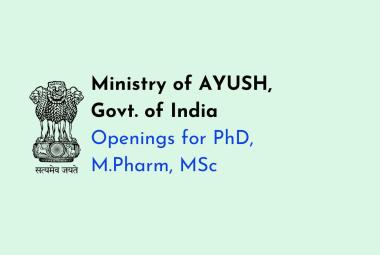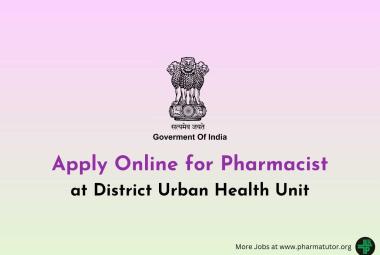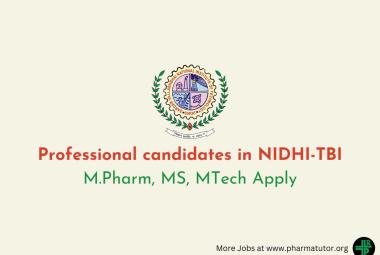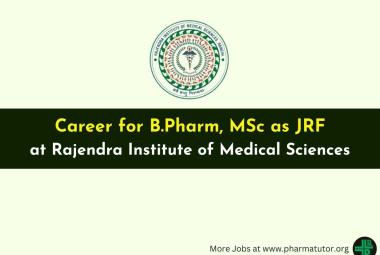{ DOWNLOAD AS PDF }
ABOUT AUTHORS:
NG Dhawan*1, Manisha Mavai2, Priyanka Bishnoi3, Raaz K Maheshwari3
1Amity Institute of Environmental Sciences, Amity University, Noida, UP, India
2Department of Botany Physiology, AIIMS, Jodhpur, Rajasthan, India
3Department of Botany & Biotechnology, University of Rajasthan, Rajasthan, India
4Department of Chemistry, SBRM Govt PG College, Nagaur, India
*rkmgreenchem.jaipur@gmail.com
ABSTRACT
The genetic resources and indigenous communities traditional knowledge of developing countries is being exploited by the Developed countries in the name of patents for inventions that are derived from genetic resources. The exploitation of genetic resources and indigenous communities traditional knowledge by the developed countries in the name of patents on the inventions derived from those genetic resources is actually bio-piracy. Protection of the TK of the local and indigenous communities appears to be one of the most debatable and complex issues. This paper brings out the role of domestic IPR constitution that looks to protect traditional system of medicine and associated TK in Indian sub-continent. Further, it attempts to validate the necessity of introduction of a national TKDL, which can be utilized as an evidence of the 'prior art' by the examiners of patent offices, nationally as well as internationally. Thus, it aims to address the concerns relating to the creation of TKDL in India.
[adsense:336x280:8701650588]
|
PharmaTutor (Print-ISSN: 2394 - 6679; e-ISSN: 2347 - 7881) Volume 4, Issue 4 Received On: 16/11/2015; Accepted On: 03/12/2015; Published On: 01/04/2016 How to cite this article: Dhawan NG, Mavai M, Bishnoi P, Maheshwari RK; DTK of Medicines from Bio-piracy: Its conscientiousness by TKDL of India; PharmaTutor; 2016; 4(4); 13-17 |
REFERENCE ID: PHARMATUTOR-ART-2405
INTRODUCTION
India has a rich biodiversity and is equally bestowed with rich cultural diversity. Ayurveda, the ancient science of perfect livelihood, with its herbal medicine elements illustrates India's TK. In addition to the codified information in streams like AYUSH there are several other traditional systems and knowledge streams in India, chiefly with the large varieties of tribal communities. Indigenous knowledge systems present economical and more reasonable solutions to most of the human health care problems currently being faced in developing countries like India. This asset of the country desires to be suitably utilized for the enhancement of the health of the ecosystem and the communities as well. This TK has potential to benefit the communities that have possession of the TK, the nation and also the entire human kind.
The expression bio-piracy submits the profitable expansion of naturally occurring biological materials, by a technically superior country or organization without providing a reasonable reimbursement to the community or land in whose country the resources were initially discovered. (IPR refers to the rights that are given to persons over the creations of their minds. This gives the creator an exclusive right over the use of his/her creation for a certain period of time after which the creation is made available to the public domain1. According to the WIPO, efficient and equitable intellectual property systems can assist countries in realizing the potential of intellectual property as a catalyst for economic development and social well-being. The WIPO defines IP as the creations of the mind like inventions; literary and artistic works; and symbols, names and images used in commerce. IP is divided into two categories: Industrial Property (patents for inventions, trademarks, industrial designs and geographical indications) and Copyright (such as novels, poems and plays; films, music, artistic works like drawings, paintings, photographs and sculptures and architectural designs).
[adsense:468x15:2204050025]
Why TK needs protection?
The issues related to the IPRS of herbal and medicinal plants are currently the issues that need urgent attention. Presently there are many multinational companies that are by now patenting or have patented more than half of the recognized plant varieties which are found in the regions of richest biodiversities of the world. This in reality leads to loss of agricultural biodiversity, loss of cultivator’s livelihoods, and ultimately the loss of seed-banks from the native areas2. It has been now understood that the use of folklore ideas and facts of traditional healers is a considered as short cut way to isolate and discover pharmacologically active compound (Holland, 1994). However, the main aim of intellectual property right should be to protect the ethnic and customary knowledge so that it can used to control the Bio-piracy all over the world[3]
Innovations/ researches that are based on TK may take advantage from patent, trademark, and geographical indication protection, or can be protected as a trade secret or confidential information. However, traditional knowledge as such - knowledge that has ancient roots and is often oral - is not protected by conventional intellectual property systems4. The traditional system of medicine is internationally facing few challenge like classification, uniform quality standard, authentication based research, safety and efficiency, rational exploitation, herbal and drug interactions, inadequate consideration of socio-cultural framework of their application and usage, assuring sustainable natural resource use, & protection of IPRs of knowledge holders.
International Initiatives to Protect Traditional Knowledge
There are two most important initiatives that facilitate to guard community and biodiversity from bio-piracy: The CBD that resulted from 1992 RES and the NP agreed in Japan in 2010. The CBD proposes to lay down procedure worldwide in order to avoid prowling of biological diversity in biodiversity-rich areas. On the other hand the NP, which was formalized in 2010, details the ways by which the CBD can be applied. The key apprehension is of AB). The aim is to have better controlled access to genetic resources.
The RD (known as Agenda 21) and the CBD accepted and emphasized the requirement for governments to “respect, preserve and maintain knowledge, innovations and practices of indigenous and local communities” and support the right of traditional communities to share in the economic and social benefits. The significance of protecting and conserving the novel TK has been accepted through several international instruments, that includes the UDHTs, the CBD and The DUND on the RIP, etc. Numerous agencies of United Nations are also functioning to address the protection of Traditional Knowledge under the existing intellectual property rights methods. The WIPO is accountable for a variety of activities that encourage the protection of indigenous intellectual property globally5.
Some well-known cases of Bio-piracy
The simplest instance of Bio-piracy might be “The exploitation of native knowledge of medicinal plants for patenting by medical corporations without recognizing the reality that the information is not novel, or invented by the patentee, and thus the piracy robs the indigenous population to the rights to profitable exploitation of the know-how that they themselves had developed”. The two cases can easily show up the troubles faced by the native groups functioning in India when the patent was granted some other groups:
The case of patent for Neem (Azadirachta indica A. Juss.):Neem is a hardy tree that is native of India, with qualities like quick growing, drought tolerant ever-green. It is commonly found growing in Myanmar, Bangladesh, and Pakistan. It has been well-established in Indian literature that each and every tree parts have medicinal properties. It is very well identified to own antifungal, antibacterial, and sedative properties. It is also believed to be effective in cure of diabetes, infertility, and parasitic infections.It is a major constituent of traditional HMS (Ayurveda), and is frequently prescribed for skin-related ailments. The US- DA and a PRC (1995) received a patent on a method to extract an antifungal agent from the Neem tree. The patent was ultimately reversed in 2005 after the Indian Government commenced legal action in response to public protest.
The case of patent for Turmeric (Curcuma longa Linn.): Turmeric is basically used for its rhizomes that are commonly used as a spice for flavoring/coloring Indian food preparations. It is a useful component in medicines owning to this fact it has been used for centuries to heal wounds and rash, it is also used in cosmetics and dyes. In 1995, two emigrant Indians at the UMMC were approved a US patent on application of turmeric in wound curing. The CSIR, India, New Delhi confronted the patent on the basis of existing of prior art. Their claim was supported by documentary facts of traditional knowledge, including very old Sanskrit text and a paper published in 1953 in a Journal. Subsequently, US PTO upheld the CSIR objections and cancelled the patent. The US Patent Office revoked this patent in 1997, after ascertaining that there was no novelty; the findings by innovators having been known in India for centuries.
Responsibility of TKDL of India
Nature has bestowed India with a great wealth of TK in terms of natural systems of medicines for the treatment of wide varieties of diseases. This knowledge has usually been passed down from one generation to another by word of mouth. A part of this knowledge is expressed in ancient traditional and added literature, and is usually inaccessible to the ordinary man and even if available it would be rarely understood. Thus, the proper documentation of this existing knowledge, available in public domain, on various traditional systems of medicine has become very important to protect the control of this traditional knowledge and to guard it from being misappropriated in the types of patents on non-original innovations[6].
TKDL is a joint project involving CSI, and Department of AYUSH, and is being executed at CSIR. It endorses the goals set by the NP on the issue of protection of codified traditional information systems such as Ayurveda, Unani and Siddha[7]. The main objective of creating the TKDL database is to prevent the misappropriation of Traditional Knowledge at IPOs so that the cases on bio piracy such as turmeric and Neem could be prohibited in future[8,9].
The purpose of TKDL is precisely analogous to that of patent database of WIPO's IPDL. The chief distinction is that IPDL or patent data-base is created only after the patent has been granted, thus, IPDL patent database utilizes the well-established classifications such as IPE and internationally agreed Numbers for the Identification of (bibliographic) Data (INID) and other accessible documentation, but in case of TKDL related details are not directly available. Thus, for creating TKDL there is a need to accumulate similar details as an inventor compiles at his level, before filing an application in an IP office[9,10].
The digital library presents existing information accumulated from previous work by other researchers and scholars. These includes Ethno-pharmacological citation of from available ethno-botanical studies, conventional healing practices and rituals from old lexicographic and linguistic documentation as well as current immersion research studies being conducted in selected ethnic groups, library of traditional healers, plant compendium, and a library of traditional healing terminologies. The TKDL involves documentation of the traditional knowledge accessible in public domain in the form of obtainable literature related to AYUSH, in digitized format in five international languages viz. English, German, French, Japanese and Spanish. It will prevent misuse of Indian traditional knowledge, mainly by flouting the format and language barrier and making it available to patent examiners at International Patent Offices for the purpose of carrying out search and examination.
TKDL is a productive effort and has been accepted as an effective approach for averting the grant of false patents at the IPOs. Hence, numerous countries and organizations such as South Africa, Mongolia, Malaysia, Kenya, Thailand, SAARC countries, African regional Industrial Property Organization are enthusiastic to replicate the TKDL model for preventing misuse of their own traditional knowledge. The GoI India has also already taken steps to allow access of the TKDL database to some IPOs under non-disclosure agreements for the purpose of search and examination10.
CONCLUSION
The inexplicable gathering of medicinal plants from wild populations can give rise to added apprehensions related to global, regional and/or local over-harvesting, and protection of endangered species specifically. The impact of welfare of local communities should be considered while discussing the concerns of cultivation and collection on the environment and ecological processes. All intellectual property rights with regard to source materials must be respected. WHO has cooperated with other United Nations specialized agencies and international organizations in dealing with the above-mentioned issues. Such collaborations will be more reinforced through the progress and the updating of relevant technical guidelines in these areas. Safety and quality assurance measures are needed to overcome these problems and to ensure a steady, affordable, authentic and sustainable supply of medicinal plant materials of good quality.
TKDL thus acts as a link between formulations accessible in local languages and a Patent Examiner at a global level, since the database will provide information on modern as well as local names in a language and format understandable to Patent Examiners. It is expected that the issue of the gap on lack of access to prior art traditional knowledge shall get addressed with the proper implementation of TKDL.
International agencies as well as National governments should evaluate existing law and policy with a vision to expand more accessible and directed prior art search processes and should also consider potential to accept interim procedures which may reduce the pressure on native communities and their knowledge systems by creating a obligation for consumers to reveal prior informed permission as a clause for technical and profitable use of TK. The approach in which the case of India TKDL is discussed in the paper it can serves as a lesson for other countries to take measures for the conservation of their TK and giving due credit to indigenous communities.
Thus, it can be concluded from the above discussion that depending on the accurate objectives of any organization, databases may play an important role in protection of TK. Though, databases single-handedly can not present a extremely efficient protection of TK, rather they must be seen as an significant constituent or instrument in a broader system of TK governance. It should be including regular law and practice, national right to use and benefit-sharing legislation, and sui generis TK law and policy. Development of any TK regime must be guided by the customary law and practice of indigenous peoples and local communities. There is a need for the complete input of indigenous communities in the development not only of databases but also in the procedure for progress of any regime, sui generis or otherwise, for the security of TK. Thus, compilation and documentation of non-codified knowledge and framework to include these in TKDL will strengthen India’s position against bio-piracy.
Abbreviations: NKC (National Knowledge Commission); TK (Traditional knowledge). TKDL(Traditional Knowledge Digital Library); IPO (International Patent Office); International Preliminary Examination); CSIR (Council of Scientific Research & Development); IDPL (Intellectual Property Digital Library); NP (Nagoya Protocol); UMMC (University of Mississippi Medical Centre); HMS (Hindu Medical System); RD (Rio Declaration) ; UDHT (Universal Declaration of Human Right), CBD (Convention on Biological Diversity); DUND (Draft United Nations Declaration); (Rights of Indigenous People) ; RES (Rip Earth Submit); AHUSH (Ayurvedic & Yoga & Neuropathy, Unani, Siddha & Homeopathy); SAARC (South Asian Association for Regional Cooperation) GoI (Government of India); INID (International Network Interface Device) ;DA (Department of Agriculture); PRC (Pharmaceutical Research Corporation)
REFERENCES:
1. World Trade Organization, WTO (2012) Annual report Retrieved from wto.org/english/res_e/booksp_e/anrep_e/anrep12_e.pdf
2. Hussain S. and Malik F; Non-Traditional Forms of IP: Protection of Traditional Knowledge, Folklore and framework access to genetic resources. WIPO roundtable on formulation and implementation of National Intellectual Property Strategy, Islamabad, Pakistan; 2006 August; 16-18;17-21
3. Holland B. K; Prospecting for drugs in ancient text.; Nature; 1994; 369(6483); 702.
4. Jayaraman K. S. (1996). “Indian ginseng” brings royalties for tribe. Nature, 381, 182. Lewis W. H; Pharmaceutical discoveries based on ethno-medicinal plants: 1985 to 2000 and beyond. Economic Botany; 2003; 57(1); 126-134.
5. TDKL (Traditional Knowledge Digital Library) TKDL, (July, 2015) Retrieved from TKDL Traditional Knowledge Digital Library, the official website of GoI. tkdl.res.in
6. WIPO (World Intellectual Property Right Organisation), May, 2015 Retrieved from World Intellectual property Right Organisation (WIPO) website wipo.int/
7. Gupta. A. K. An Approach for establishing a traditional knowledge digital library. J. Intellec. Prop, Rights; 1990; 5(6); 307-319
8. Dhawan, NG. and Maheshwari RK. Bio-piracy in Traditional System of Medicines: A Threat to Intellectual Property Rights; National Environmental Science Academy Newsletter; New Delhi, Vol. 18 (5); 1-2.
9. Dhavan NG., Tandi SR., Chauhan VS., Khan MMA., and Maheshwari RK; Protecting traditional knowledge of medicines from bio-piracy: Responsibility of TDKL of India; Re-defining the strategic role of libraries in India culture & modern society; Ghaziabad, UP, India, 2015; 110-114.
10. NKC (National Knowledge Commission), March, 2009, Report to the Nation for 2006 – 2009. Published by GoI.
NOW YOU CAN ALSO PUBLISH YOUR ARTICLE ONLINE.
SUBMIT YOUR ARTICLE/PROJECT AT editor-in-chief@pharmatutor.org
Subscribe to Pharmatutor Alerts by Email
FIND OUT MORE ARTICLES AT OUR DATABASE









